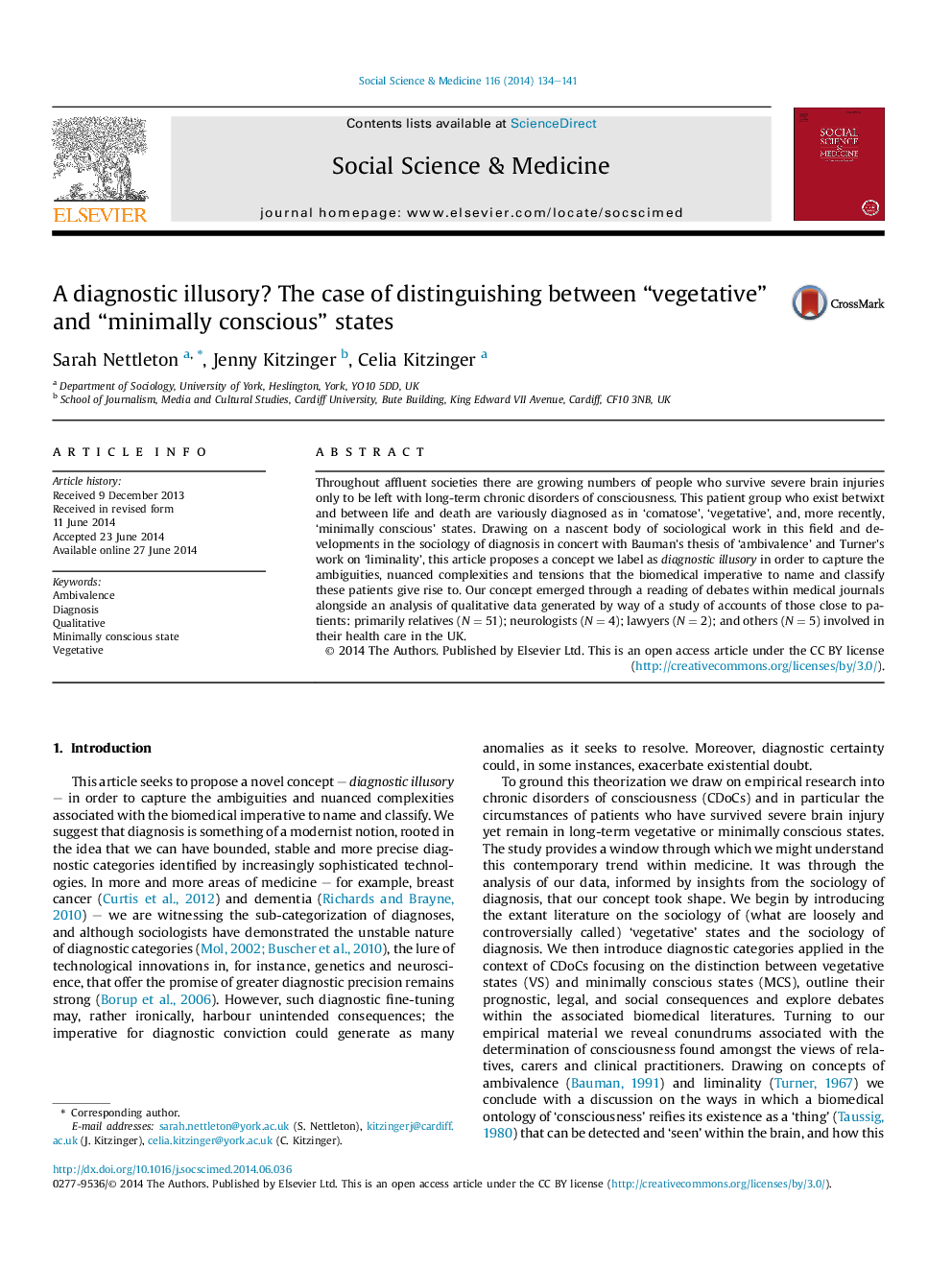| Article ID | Journal | Published Year | Pages | File Type |
|---|---|---|---|---|
| 7334795 | Social Science & Medicine | 2014 | 8 Pages |
Abstract
Throughout affluent societies there are growing numbers of people who survive severe brain injuries only to be left with long-term chronic disorders of consciousness. This patient group who exist betwixt and between life and death are variously diagnosed as in 'comatose', 'vegetative', and, more recently, 'minimally conscious' states. Drawing on a nascent body of sociological work in this field and developments in the sociology of diagnosis in concert with Bauman's thesis of 'ambivalence' and Turner's work on 'liminality', this article proposes a concept we label as diagnostic illusory in order to capture the ambiguities, nuanced complexities and tensions that the biomedical imperative to name and classify these patients give rise to. Our concept emerged through a reading of debates within medical journals alongside an analysis of qualitative data generated by way of a study of accounts of those close to patients: primarily relatives (NÂ =Â 51); neurologists (NÂ =Â 4); lawyers (NÂ =Â 2); and others (NÂ =Â 5) involved in their health care in the UK.
Related Topics
Health Sciences
Medicine and Dentistry
Public Health and Health Policy
Authors
Sarah Nettleton, Jenny Kitzinger, Celia Kitzinger,
